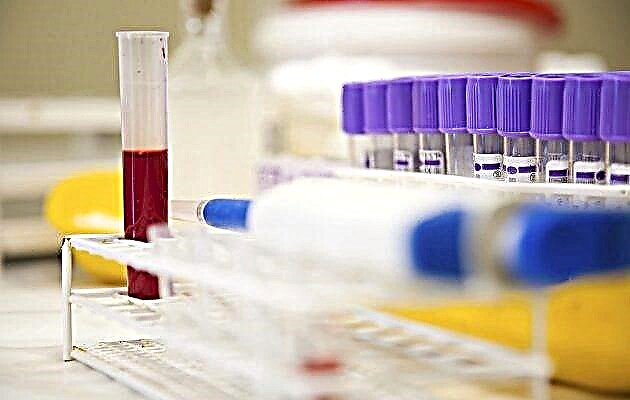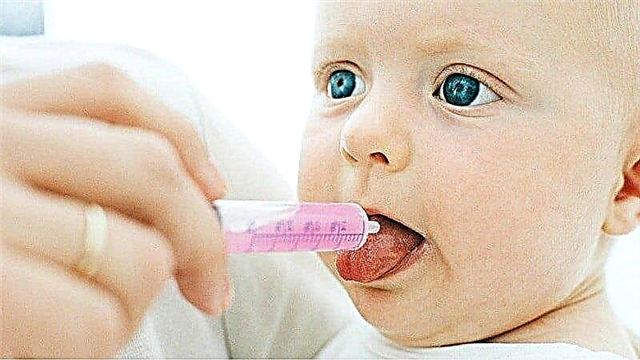
If a woman is not planning a pregnancy, then she usually does not have a question about how early a test can be done to understand if there is one. This question is usually perplexed by those actively planning the birth of a baby, because each cycle after ovulation begins a period of agonizing waiting - whether it worked or not. The use of tests can help in the early diagnosis of pregnancy, but only if the woman does everything on time and correctly.

How do tests work?
Pregnancy tests work like a litmus test. They signal the second strip for the presence of a special hormone in a woman's urine - chorionic gonadotropin, better known as hCG. To find out when the test will show an accurate result, it is important to know when and how this hormone appears in the urine.
After conception, which occurs strictly during the ovulatory phase (from the moment the egg is released within 24-36 hours), a new cell of a new organism is formed - a zygote. She has her own genome, borrowed equally from two parental cells (23 chromosomes from the paternal and maternal gametes). The zygote already 12 hours after conception begins its path into the uterine cavity, since only in it is its further development possible.
For about three days, the zygote, splitting up, moves along the fallopian tube. She is actively helped by the movement of the villi of the inner surface of the oviduct. On the 4th day, the new organism appears in the uterus and for a couple of days or a little more remains in a state of free "floating" - it floats in the uterine cavity.
On the 6-9th day after conception, the embryo is implanted. It adheres to the endometrium, the villi of the outer layer (chorion) begin to secrete an enzyme that dissolves endometrial cells. So the fertilized egg gets the opportunity to create a kind of "hole" for itself, into which it plunges. The villi are connected to the blood vessels of the uterus. The embryo begins to receive nutrition, oxygen from the mother's blood. And from the moment of successful implantation, the substance of interest to us begins to enter the blood - chorionic gonadotropin.

HCG is necessary for the corpus luteum formed on the ovary after ovulation to continue to live and produce progesterone. Without progesterone or with a small amount of it, pregnancy cannot develop, it is interrupted. In the absence of pregnancy, the corpus luteum begins to fade away within 10 days after ovulation, and a few days after the termination of its work due to the fall of progesterone, menstruation begins.
HCG does not allow this development of events. Progesterone remains high. The corpus luteum functions until the end of the first trimester, until the placenta is formed. Then the "child's place" begins to perform the functions of the "hormone factory", and the corpus luteum regresses. And hCG peaks towards the end of the first trimester, after which it decreases.
The hCG hormone rises every two days after implantation, approximately twice in the blood. But in urine, on the analysis of which the effect of pregnancy tests is based, the hormone begins to be determined a little later.
Any test of any type has a test area on which a special reagent is applied, sensitive to the increased content of chorionic gonadotropic hormone molecules in the urine. Thus, with an increase in hCG, the second strip becomes colored.

Dates
As you can see from the physiological basis of the process, a pregnancy test is completely useless if only two or four days have passed since ovulation. At this time, the ovum has not yet fixed in the uterus, and therefore the level of hCG will be equally low in both pregnant and non-pregnant women. It will gradually build up in the urine only after the successful attachment of the embryo, that is, during the last week of your cycle, starting from day 21.
Does this mean that the test will show an accurate result on and after this day? Not at all. At first, the excess will be insignificant, just above 5 mU / ml, and the sensitivity of the tests starts from 10 units per milliliter (the most sensitive). Again, we must not forget about the individual characteristics of the process. Ovulation could be later than expected, and implantation could be delayed. Both that, and another can cause a late increase in the concentration of human chorionic gonadotropin in the blood and urine.
First of all, the level of the hormone rises in the blood. It's believed that with timely ovulation and successful implantation in the period from 7 to 9 days after conception, a blood test for hCG, which is carried out under laboratory conditions, can show pregnancy 4–5 days before the onset of the delay. With tests everything is different, their task is to determine the presence of a hormone in urine, and molecules of the active substance get there later.

Manufacturers recommend starting testing from the first day of missed period and later. By this time, a sufficient concentration of the substance is usually already observed in the urine, allowing the reagent of the test zone to react with hCG molecules. This rule applies equally to different test systems.
Ultrasensitive tests (with a sensitivity threshold of 10 to 15 units) can determine the content of hCG in urine before retention, however, provided that both ovulation and implantation took place on average. The most sensitive tests are best done if you really want to speed up the diagnosis, 2–3 days before the start of the delay.
Most modern tests have a base sensitivity of 20 to 30 units, they are designed to diagnose the absence of menstruation at the expected time.
Test systems are most accurate in the first two weeks after the start of the delay. For a period of 4-5 days after the start of the delay, all tests, if carried out correctly, show a fairly reliable result, which can be quite trusted.
If doubts arise, then already from a week after the start of the delay, you can go for an ultrasound - the ovum by this time begins to be determined in the uterus, and 2-3 weeks after the start of the delay, you can visit the gynecologist and undergo a standard vaginal examination - objective obstetric signs of an "interesting position" begin to appear not earlier than this time.

When determining the time when you can start doing tests to obtain a reliable result, remember that you need to count not from conception (it is impossible to accurately determine the time of fusion of germ cells), not from sexual intercourse (from the moment of the act to conception, a day or three days and even a little more), and from the beginning of the cycle - the first day of menstruation - or from the date of ovulation, if you know it.
What are the most accurate types?
Often women are interested in what types of test systems are most accurate in determining pregnancy at the earliest possible date. Manufacturers of all systems claim that their accuracy is higher than 98%. But in practice this is not at all the case. Much depends on the sensitivity threshold of the product. Therefore, do not be lazy and carefully study the packaging. Tests that indicate that they have a sensitivity of 10 points to 15-20 points are the most sensitive.
Inkjet tests and electronic systems are usually highly sensitive. They are more expensive than standard strip strips. If the issue of timing is not so important, you can not overpay, calmly wait for the start of the delay and do any test. If you want to know about pregnancy as early as possible, pay attention to inkjet and digital devices.

After the start of the delay, there is no significant difference. Price doesn't determine accuracy either. Cheap tests are sometimes more informative than expensive ones, and therefore the choice is entirely a purely personal matter.
What influences the readings?
Timing can primarily affect the accuracy of the test system. If a woman is in a hurry, does not comply with the above-mentioned optimal testing times, then the probability of getting an unreliable result increases significantly. Even high-precision digital tests 4-5 days before the onset of the delay determine pregnancy, according to the manufacturers, with only a 50% probability, but already 1-2 days before the onset of the delay, the predicted accuracy exceeds 90%. therefore it is very important to adhere to the deadlines, realizing that hCG cannot appear in the urine the next day after conception in principle. And if it can, it is clearly not because of pregnancy.
A woman can get unreliable results due to the presence of neoplasms in the body, tumors that themselves produce hormones. Most often these are malignant tumors. In this case, and outside of pregnancy, the level of hCG will be increased, tests may give a positive result.
If in the current cycle the woman underwent hormonal stimulation of ovulation, or conception occurred as a result of IVF, the accuracy of the test systems should not be counted on either. In the treatment of infertility by these methods, the administration of the hCG preparation takes place for the early maturation of the eggs, and traces of the hormone for at least 10-13 days are still detected in the urine and in the blood. The test in this case can also show a second strip without good reason (that is, without the fact of pregnancy as such).

Hormonal disorders, diseases of the endocrine system, benign tumors and cystic formations of the uterus and ovaries can affect the accuracy.
One of the most common reasons for getting false results is violation of the rules for conducting self-diagnosis. Manufacturers supply each system instructions for use. It cannot be violated. For example, strip strips should not be immersed in urine deeper than is suggested by the MAX line. After soaking, they cannot be kept longer than the time allotted for diagnostics. If a negative test lasts for half an hour, a second pale grayish strip may appear on it, and this will not be a sign of pregnancy, but simply traces of dried applied reagent.
The inkjet tests should be kept under the stream of urine for 5-10 seconds and should not be immersed in a container of urine. Tablet-based tests involve instilling urine with a pipette into a special window with a test area, and digital tests can be carried out both by the jet method and with preliminary collection of urine.
The test should not be expired, defective, and therefore the expiration dates should be examined and the integrity of the package should be visually evaluated. You need to buy such products in a pharmacy, and not at the checkout of large supermarkets, because in the second case, the risk of getting a defective product is higher, since the storage conditions in the store may not meet the manufacturer's requirements.

Use your morning urine sample, it is the most concentrated. Try not to drink a lot of fluids in the evening.
How to understand the results?
Despite the fact that the results of home pregnancy testing are quite simple and non-variable, it is they that often cause the greatest number of questions and doubts. Therefore, let's figure out which results are considered accurate and which are worth double-checking.
- Two clear, equally bright stripes Is a positive result. You can accept congratulations, please your loved ones, your partner and get ready for the birth of your baby.
- One stripe is clear, and the second is weak, faded, dull Is a dubious or weakly positive result. The reason may simply be that you were in a hurry with the diagnosis, and you need to repeat the test in a couple of days, when the hCG level is higher. If the weak strip does not want to become brighter, and after the delay, the result in dynamics remains the same as before the delay, there is a possibility that the pregnancy is ectopic (with it, hCG is produced in smaller quantities and much slower). Also, a weak second strip may indicate an insufficient level of hCG and progesterone - about the risk of miscarriage at the earliest possible date. You should do a blood test for hCG over time (take it 2-3 times with a difference of 48 hours) and visit an obstetrician-gynecologist with the results.
- One clear stripe - there is no pregnancy or the timing of testing is violated (the diagnosis was carried out too early, and even traces of hCG cannot yet be captured by the reagent).
- No stripes at all - the test is faulty, unusable, expired, which is clearly indicated by the absence of a control strip. Use another test and repeat the test.

Reviews
For the most part, the reviews of women about self-diagnosis of early pregnancy are positive. Tests with increased sensitivity quite accurately determine the "interesting position" even before the delay. Among the tests available in pharmacies, most choose the usual strip-strips - it's inexpensive, you can buy them with a stock and from different manufacturers to compare the results.
Digital tests are recognized as more accurate, but they can also "lie" - they make mistakes in determining the deadline in weeks, and can also "glitch" due to a software failure, for example, if the result is negative, show the deadline in weeks.




